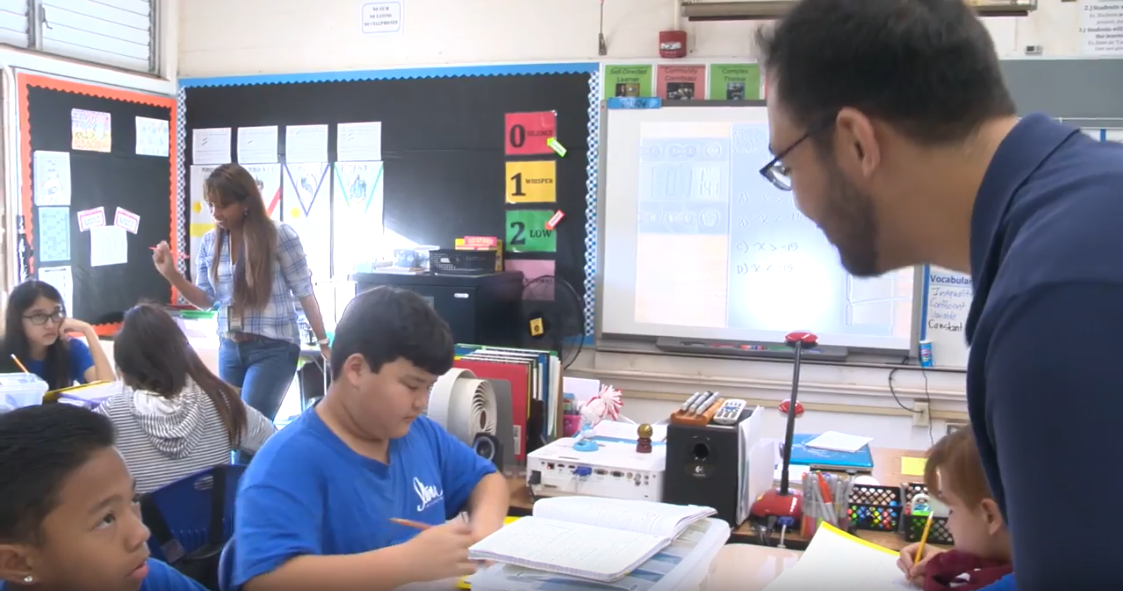The coronavirus pandemic has affected everything we do as educators, including our evaluations.
The Hawaii State Teachers Association worked to ensure that teachers will not be penalized if they are unable to complete all of the components of the Educator Effectiveness System (EES) as school buildings are now closed because of the pandemic.
We’ve shared the latest developments, including those related to EES, over the past several weeks on our website and in our COVID-19 FAQs. Members may find this roundup useful as the May 15 deadline approaches for evaluators to complete all ending conferences for educators rated less than effective.
Teachers should reference the EES Memo and FAQs that were published April 27, 2020.
- Educator Effectiveness System Modifications to Complete School Year 2019–20 Evaluations
- FAQs related to School Year 2019–20 Educator Effectiveness System Modifications due to COVID-19
HSTA also has an information sheet, “EES Crucial Deadlines and Contract Rights SY2019–20,” which outlines important dates related to EES.
EES Crucial Deadlines and Contract Rights SY2019–20
Evaluators should be meeting with teachers currently on cycle for EES to apprise them of the different scenarios and best path forward regarding their EES rating for 2019-2020 school year. See the memo for more details. Please note, the principal shall have final discretion on the scenario to be used if mutual agreement cannot be reached between teacher and evaluator.
Scenario 1: If at all possible, teachers should complete their EES cycle as normal.
Scenario 2: Teachers may need to complete their rating with modifications. See the EES FAQS for details. For example, if only one of two observations were held but teachers have enough data to demonstrate student growth, teachers should work with their administrators to modify and complete the EES cycle. Even if all observations were complete, there may be fewer data points available to demonstrate student growth. Again, teachers should work with their administrators to modify the EES plan and complete the observation cycle.
Scenario 3: When the EES evaluation cannot be completed, teachers will receive a “no rating” and be held harmless. This means the “no rating” will cause no effect on pay, pay increases or employment status for the 2020-2021 school year.
Tenured teachers who receive a “no rating” this year will be placed back on cycle in SY 2020–21 to complete an EES rating. Their rating of record will remain the rating they last received (e.g., effective). Upon completion of an effective rating in SY 2020–21, they will revert to the standard five-year cycle of evaluation based on the last digit of their Social Security number (SSN). This year, those whose SSN ended in 2 or 4 were on cycle. Next year will be 6 and 8, as well as all probationary teachers and those who received “no rating” this year.
Details for new educators
Probationary teachers who receive a “no rating” should be aware of the following impacts:
In order to successfully complete probation, each teacher must have two consecutive years of effective or better EES ratings. The following outlines how a “no rating” will impact your rating cycles as a probationary teacher.
Probationary 1–2: Educators with a “no rating” in their first year of probation will have the next two years to earn a rating of effective or higher to receive tenure on the first day of their fourth year.
Probationary 3–4: Teachers who had a marginal rating last year will have had SY 2019–20 to improve their craft and the next two years to earn a rating of effective or higher to receive tenure on the first day of their fifth year of service. Teachers who had a rating of effective or higher last year will have next year to earn a rating of effective or higher to receive tenure on the first day of their fourth year.
Probationary 5–6: Teachers who earned ratings of effective or higher for the last two school years will still receive tenure on the first day of school next year. They will have to complete the EES cycle next year. Once completed, teachers will transition to the standard five-year cycle of evaluation for tenured teachers.
The information above is for illustrative purposes only. There may be unique or unusual employment situations that impact a teacher’s probation or EES rating cycle. As an example, a teacher who is hired mid-year may complete probation and become tenured in January of their seventh semester of employment, but will still need to finish and complete their EES rating in May.
Please review the EES manual with critical dates on pages 12-13. You can reach the Hawaii State Department of Education Help Desk at (808) 586-4072 during normal business hours. Our HSTA UniServ Directors are always available as well.

